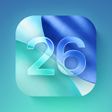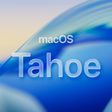Apple's iTunes Music Store has updated with a new show from NBC called Conviction. Conviction is a new mid season legal drama from NBC which focuses on young district attorneys. The show will be premiering after the Winter Olympics.
NBC and Apple, however, look like they are experimenting with digital distribution methods to promote this new television show. The Conviction show is labeled "Free" for the "World Premiere Pilot Episode + Extras" on iTunes' NBC category. (The iTunes link for the show is now available.)
Apple/Sci-Fi previously offered a half-hour Battlestar Galactica special for free to catch viewers up on the show before the winter season. Meanwhile, CBS and Yahoo similarly offered free streams of Two and a Half Men and How I Met Your Mother in late December/early January to drive interest. Both shows reportedly saw ratings boosts following the free distribution.
While iTunes TV show sales do represent an additional revenue stream for networks, providing some free content could drive interest and ratings for new shows, increasing long term revenue from television advertising and syndication.












